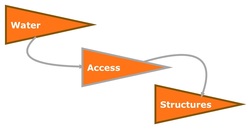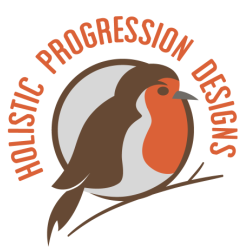
Are you about to start a project? Use this simple three-step process and I can assure you it will streamline your design. First water, then access and finally structures. A simple but key design approach.
This process is a solid, logical and practical tool that you really want to add to your tool belt. I have been using this approach for nine years because it makes so much sense.
Applying these simple steps will save you time and energy. It can be applied across the scale, from making a small veggie bed in your garden to full on broad acre design. Below I’m going to take you through the process.
This process is a solid, logical and practical tool that you really want to add to your tool belt. I have been using this approach for nine years because it makes so much sense.
Applying these simple steps will save you time and energy. It can be applied across the scale, from making a small veggie bed in your garden to full on broad acre design. Below I’m going to take you through the process.
As designers, we have the opportunity to place elements in such a way that they make the whole system function with less input. This is why a water, access and structure process is so important in land-based Permaculture design. This approach is also a great way to get going if you are not sure where to start on a design.
Water - "Water is the driving force of all nature" - Leonardo da Vinci.
Water is the backbone of all land-based design; no water no nothing. So this is your number one place to focus your attention. It is first on the list when it comes to land-based design. Taking the time to use water in the most beneficial way will give you key parameters that will have knock on effects on the overall design of your land project. It will provide you with very realistic limiting factors that will allow you to successfully design the rest of elements. Once you have your water secured, through an efficient design that focuses on using what you have to the greatest effect, you will be ready to move onto the next key element: access.
Access
Deciding how vehicles, people and animals will move through the site, if done thoughtfully, can improve efficiency and reduce overall compaction on your site. You will want to think about where to place roads, tracks, paths and trails and how their surface will be covered, as well as how often they will be used. Look out for creating multi-functional access that can feed into water systems. When your access follows natural contours or ridge lines you will reduce erosion and use your space efficiently.
Structures
Once your water and access have been designed they will support and influence your decisions on where to best position your structures. More often than not there are existing structures to work with. Often, non-permanent structures that are already on site, such as poly tunnels and yurts, are worth moving, depending on the cost and effort required. You will want to think about future structures and where best to position them. This is much more logically and practically done after the water and structure steps. Buildings can take advantage of natural formations, gravity and orientation. Trees can be given great conditions by being placed in harmony with water systems. Fences, whether permanent, portable or living, can be arranged in such a way that they allow for movement of animals taking into account rotation and seasons.
The reality is that not many gardens, homesteads, projects or farms are designed like this, if designed at all. Many just evolved that way. Lack of design makes for inefficient systems that clash, leaving those running them thinking: “I wish that was here or this was over there, or … if just that was a little further uphill...”
The thing is: if you don't use these design tools at the very beginning, down the line you will likely make a mess of the things that you have already implemented. By getting into the habit of and using this simple design process you will streamline the way you design.
Matt Prosser 26.08.2016
Water - "Water is the driving force of all nature" - Leonardo da Vinci.
Water is the backbone of all land-based design; no water no nothing. So this is your number one place to focus your attention. It is first on the list when it comes to land-based design. Taking the time to use water in the most beneficial way will give you key parameters that will have knock on effects on the overall design of your land project. It will provide you with very realistic limiting factors that will allow you to successfully design the rest of elements. Once you have your water secured, through an efficient design that focuses on using what you have to the greatest effect, you will be ready to move onto the next key element: access.
Access
Deciding how vehicles, people and animals will move through the site, if done thoughtfully, can improve efficiency and reduce overall compaction on your site. You will want to think about where to place roads, tracks, paths and trails and how their surface will be covered, as well as how often they will be used. Look out for creating multi-functional access that can feed into water systems. When your access follows natural contours or ridge lines you will reduce erosion and use your space efficiently.
Structures
Once your water and access have been designed they will support and influence your decisions on where to best position your structures. More often than not there are existing structures to work with. Often, non-permanent structures that are already on site, such as poly tunnels and yurts, are worth moving, depending on the cost and effort required. You will want to think about future structures and where best to position them. This is much more logically and practically done after the water and structure steps. Buildings can take advantage of natural formations, gravity and orientation. Trees can be given great conditions by being placed in harmony with water systems. Fences, whether permanent, portable or living, can be arranged in such a way that they allow for movement of animals taking into account rotation and seasons.
The reality is that not many gardens, homesteads, projects or farms are designed like this, if designed at all. Many just evolved that way. Lack of design makes for inefficient systems that clash, leaving those running them thinking: “I wish that was here or this was over there, or … if just that was a little further uphill...”
The thing is: if you don't use these design tools at the very beginning, down the line you will likely make a mess of the things that you have already implemented. By getting into the habit of and using this simple design process you will streamline the way you design.
Matt Prosser 26.08.2016


